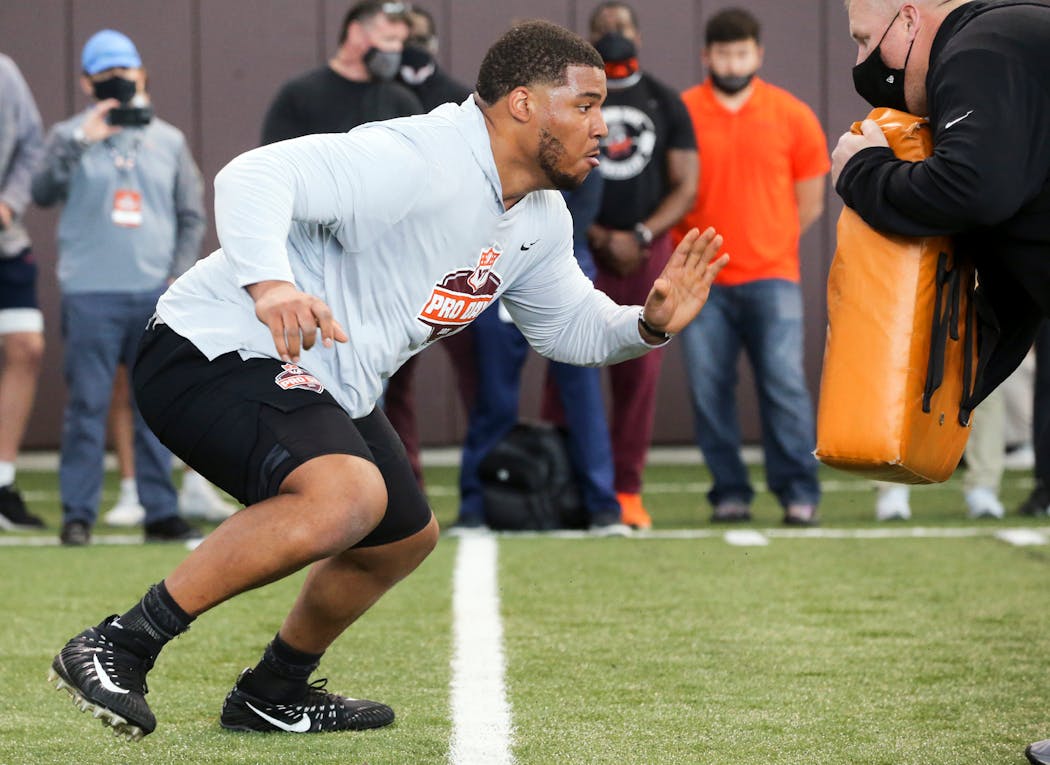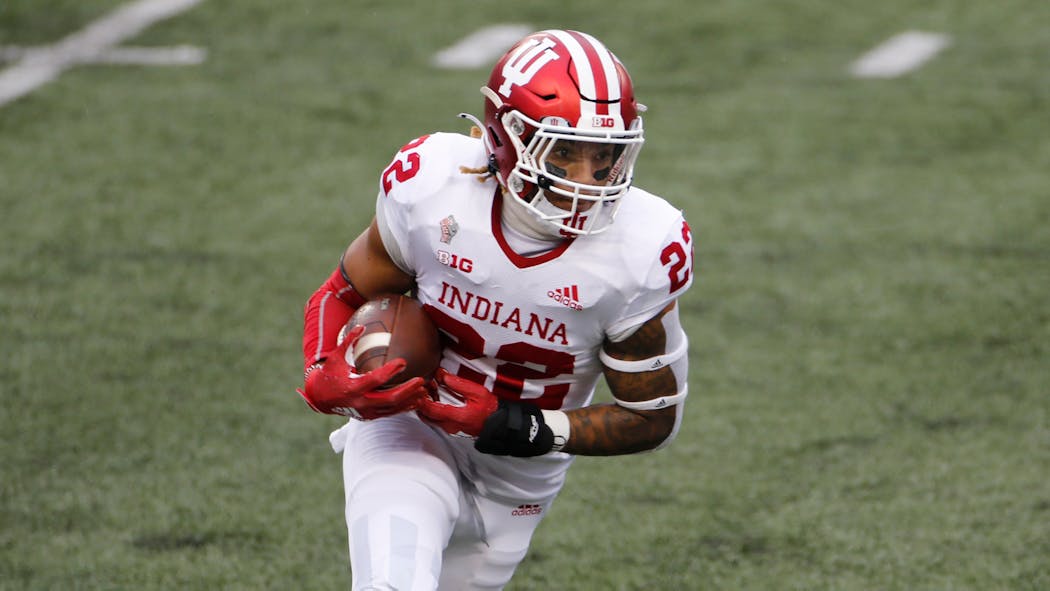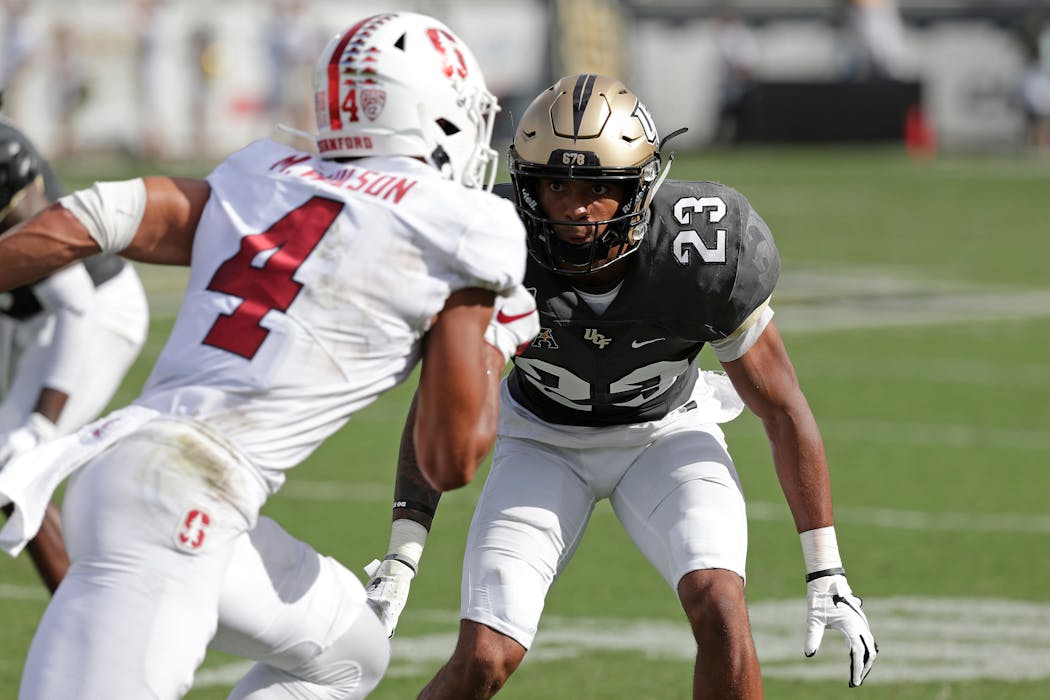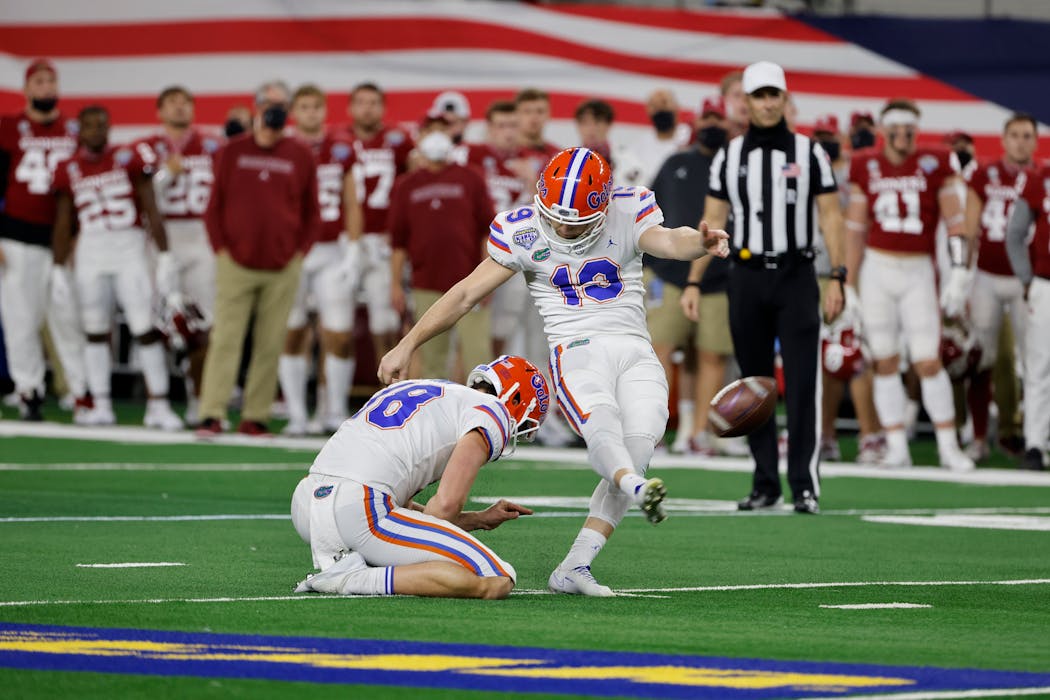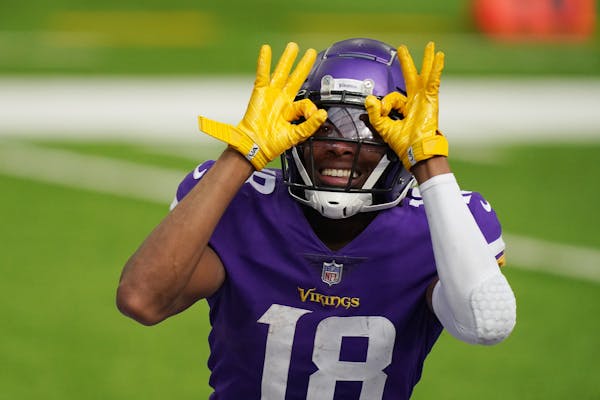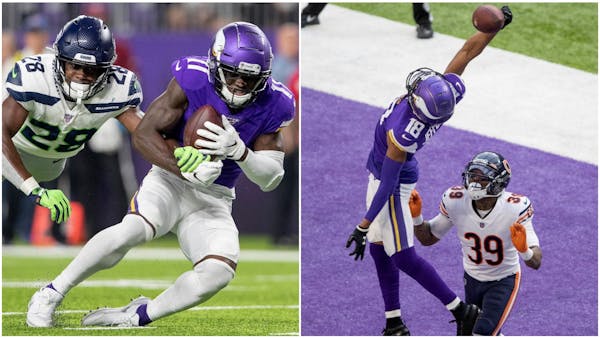The first part of the Vikings' offseason was a tacit admission that their youthful approach on defense in 2020 didn't work. They added veterans Dalvin Tomlinson, Patrick Peterson and Xavier Woods to their defense while bringing back two members of their 2016 draft class (Stephen Weatherly and Mackensie Alexander). Aside from sending a sixth-round pick to Arizona for center Mason Cole, the Vikings haven't added anything to the offense. As is often the case, improving their offensive line is a major need.
Here are the team's top needs to address heading into the NFL draft on Thursday (Round 1, 7 p.m.), Friday (Rounds 2-3, 6 p.m.) and Saturday (Rounds 4-7, 11 a.m.).
Offensive tackle (T): The Vikings aren't sure who will be protecting Kirk Cousins' blind side in 2021 with Riley Reiff now in Cincinnati. Could it be Brian O'Neill, Ezra Cleveland, a free agent … or a first-round pick?
Offensive guard (G): If the Vikings were to move Cleveland from guard to tackle, they'd need a starter to replace him on the right side of the line. They could use another guard anyway, with Dakota Dozier fighting to keep his job above Cole and others after struggling in pass protection in 2020.
Wide receiver (WR): The top of the group is solid, with Justin Jefferson heading into Year 2 and Adam Thielen still productive heading into his age-31 season. But the Vikings could use an effective third receiver to supplement the group or provide depth in case of injuries.
Quarterback (QB): We begin with the disclaimer the Vikings almost never use a high pick on quarterbacks when they don't need a starter, and it seems unlikely they'd spring for one early this year. But they still need a backup behind Cousins, and have done plenty of work scouting mid-round QB options.
Defensive end (DE): Danielle Hunter's absence last year underscored the Vikings' need for another pass rusher. The spot would become an even bigger priority if Hunter's contract demands or concerns about his neck injury meant he wasn't available on an every-down basis this season.
Safety (S): With Anthony Harris gone, Woods here on a one-year deal and Harrison Smith headed into the final year of his contract at age 32, the Vikings need to think about the present and the future on the back end of their defense.
Cornerback (CB): Just one more? There's reason to think the Vikings could follow Mike Zimmer's catchphrase about how many corners a team needs: Peterson is only signed to a one-year deal, Mike Hughes' neck injuries remain a concern and Jeff Gladney's arrest this month creates some questions about his immediate future.
Linebacker (LB): The Vikings should improve with a healthy Anthony Barr and Eric Kendricks, but there's little depth beyond those two longtime fixtures, and the fact Barr's deal is now voidable after 2021 means it might be time to devote a pick toward the future here.
Read our position-by-position draft previews.
BEN GOESSLING'S MOCK DRAFT
With only one pick in the first two rounds, the Vikings will have to get creative to address a number of key spots before a pivotal season. Here's our best guess as to how they'll spend their 10 picks in this year's draft, including a couple of trades they could make in parentheses. For our purposes, we'll trade only draft picks, not players on the current roster.
FIRST PICK: Round 1, No. 14
Christian Darrisaw, T, Virginia Tech
The Vikings have been keenly interested in Darrisaw, the big tackle who would be expected to protect Cousins' blind side while allowing Cleveland and O'Neill to stay where they are.
Other possibilities:
Jaelan Phillips, DE, Miami. Phillips and Michigan's Kwity Paye have piqued the Vikings' interest. Phillips has a history of wrist issues and concussions, but if his medical history checks out, he'd provide a dynamic pass-rushing presence.
Alijah Vera-Tucker, T, USC. If Darrisaw and Northwestern's Rashawn Slater are gone, the Vikings are believed to be considering Vera-Tucker, who could turn out to be a guard in the NFL.
SECOND PICK: Round 2, No. 54 (from Indianapolis in exchange for Nos. 90 and 134)
Payton Turner, DE, Houston
With two third-round picks and four fourth-rounders, the Vikings have the ability to trade back into the second round, GM Rick Spielman said this week. Here, we've got them moving into Round 2 for Turner, who would fit as the kind of long-armed, athletic prospect who can move around the line and blossom under Andre Patterson's tutelage.
Other possibilities:
Samuel Cosmi, T, Texas. His experience as a pass protector and his fit with the Vikings' zone-blocking scheme could make him an attractive target in Round 2 if they haven't found an offensive tackle yet. The 6-7 Cosmi played 35 games over the past three years, spending time at both left and right tackle.
Dillon Radunz, T, North Dakota State. The Becker, Minn., native played only one game last fall — the Bison's matchup with Central Arkansas to showcase quarterback Trey Lance — but had an impressive Senior Bowl week. He would give the Vikings a good option as a left tackle or a guard in their zone scheme.
THIRD PICK: Round 3, No. 78
Jamar Johnson, S, Indiana
He projects as one of the best coverage safeties in the class. He's had tackling issues in college, but his ability to make plays in the passing game would help the Vikings in the long term and could provide competition for Woods in the short term.
Other possibilities:
Tommy Togiai, DT, Ohio State. The Vikings have shown interest in Togiai, who attracted attention by putting up 40 bench press reps at 225 pounds during his pro day. They could add him to join Tomlinson and Pierce as another run-stuffing tackle in the middle of their defense.
Liam Eichenberg, G, Notre Dame. The 6-6 Eichenberg was a tackle at Notre Dame, and could stay there in the NFL. But he could also end up as a guard with the size to deal with defensive tackles and experience with zone schemes.
FOURTH PICK: Round 4, No. 119
Kendrick Green, G, Illinois
Even after they've added Darrisaw in the first round of our mock draft, the Vikings can benefit from adding a mobile guard who can step in and get to the second level in their run-blocking scheme. That's Green, who rates as one of the better zone-blocking guards in this draft.
Other possibilities:
Kyle Trask, QB, Florida. He has been a popular mid-round target for the Vikings in mock drafts as the team considers quarterbacks who might be able to back up Cousins. Trask's rapid improvement at Florida could push him into the second or third round of the draft.
Baron Browning, LB, Ohio State. He has the size and speed to suggest he could turn into Barr's successor, though he'd have to make great improvement in terms of his ability to read and react to what an offense is doing.
FIFTH PICK: Round 4, No. 125
Davis Mills, QB, Stanford
Mills is an accurate passer who makes decisions quickly and would be able to step into a NFL-style offense. He struggles when things break down, but he's got the arm strength to develop into Cousins' backup.
Other possibilities:
Kelvin Joseph, CB, Kentucky. His length, fluidity and speed make him an attractive prospect, though he'd need considerable development at the NFL level and will have questions to answer about a suspension while he was at LSU and some personal foul penalties at Kentucky.
Sage Surratt, WR, Wake Forest. He's a physical receiver with good hands who would give the Vikings a solid No. 3 option, though his lack of deep speed and suddenness in his cuts means he could have something of a modest ceiling in the modern game.
SIXTH PICK: Round 4, No. 143
Hunter Long, TE, Boston College
After Kyle Rudolph's departure, the Vikings could use another tight end who can help in several facets of the game. They met with Long before the draft and could add him to a group that includes Irv Smith Jr. and Tyler Conklin.
Other possibilities:
JaCoby Stevens, S, LSU. At 6-2 and 230 pounds, he could end up being a linebacker in the NFL — or the type of safety/linebacker hybrid that has occasionally intrigued Zimmer over the years in Minnesota.
Elerson Smith, DE, Northern Iowa. The Minneapolis South product has put on weight before the draft, and likely will still need to bulk up at the NFL level, but his athletic ability and length (6-6 1/2) as a pass rusher would make him a possible fit if the Vikings are still looking for help at the position.
SEVENTH PICK: Round 5, No. 157
Tay Gowan, CB, Central Florida
The Vikings are never too far from thinking about a cornerback, and Gowan would give them the kind of physical presence they like to have in their secondary. He's got a thin résumé, and he'd need to improve in zone coverage, but his size (6-2) and speed will be attractive to many teams.
Other possibilities:
Alaric Jackson, T, Iowa. The Vikings like how Iowa offensive linemen can translate from Kirk Ferentz's system to the NFL, and while Jackson might have a limited ceiling, he could also make sense here if the Vikings still need help on the line.
Osa Odighizuwa, DT, UCLA. He's only 6-2 and 280 pounds, but the fact he was a standout wrestler in high school likely helped him score points with the Vikings, who've prized the balance and hand-fighting skills former wrestlers bring to the line of scrimmage.
EIGHTH PICK: Round 5, No. 168
Jaelon Darden, WR, North Texas
Darden, at 5-9 and 174 pounds, would be a different kind of receiver for the Vikings, but he's one of the more dynamic players in the class. That could make him an attractive fit for a team that badly needs help in the return game — and would benefit from another chess piece on offense.
Other possibilities:
K.J. Britt, LB, Auburn. The Vikings met with Britt before the draft; he's likely only an early-down player, but he's physical in the run game and unafraid to take on blockers.
Darius Stills, DT, West Virginia. He is one of the shorter defensive tackles in the draft, at just over 6 feet, but his effort and attitude could help him in an effort to overcome some of his physical limitations.
NINTH PICK: Round 6, No. 209 (from Rams with No. 252 for No. 199)
Evan McPherson, K, Florida
McPherson declared for the draft a year early, after a strong career at Florida that included a missed 55-yarder against LSU late in the year. The Vikings have tried talented SEC kickers who've struggled at the end of their college careers twice before; will the third time be the charm?
Other possibilities:
Chris Evans, RB, Michigan. If the Vikings want an option to replace Mike Boone, Evans (with whom they met before the draft) would offer some versatility to the group, though he's already 23 years old.
Peyton Ramsey, QB, Northwestern. After adding Nate Stanley in the seventh round last year, the Vikings could look at another Big Ten quarterback to develop into a backup for Cousins.
TENTH PICK: Round 7, No. 252 (from Rams with No. 209 for No. 199)
Derrick Barnes, LB, Purdue
We couldn't end this without Spielman — who starts the draft without a seventh-round pick — making a move to get one back. Barnes' aggressiveness, lateral quickness and closing pursuit could make him a solid late-round addition to a linebacking group that needs depth now and players the team can develop for the coming years.
Other possibilities:
Kenny Yeboah, TE, Mississippi. He would need to add size as a run blocker and more consistency in the passing game, but could be intriguing for the Vikings at the end of the draft if they haven't added a player who can fit in their heavier personnel groups.
Chauncey Golston, DE, Iowa. Golston's work as an interior rusher at Iowa could provide some late-round value to the Vikings, who might be looking for another player who can step inside on passing downs.

Gophers women's sports: 5 stars of the season you should know

Live: Twins vs. Angels. Follow the action on Gameview
Bevy of defensive playmakers are available in Round 2 of the NFL draft after historic offensive run

Live: Wolves vs. Suns in Game 3 of the playoffs. Follow it on Gameview.

